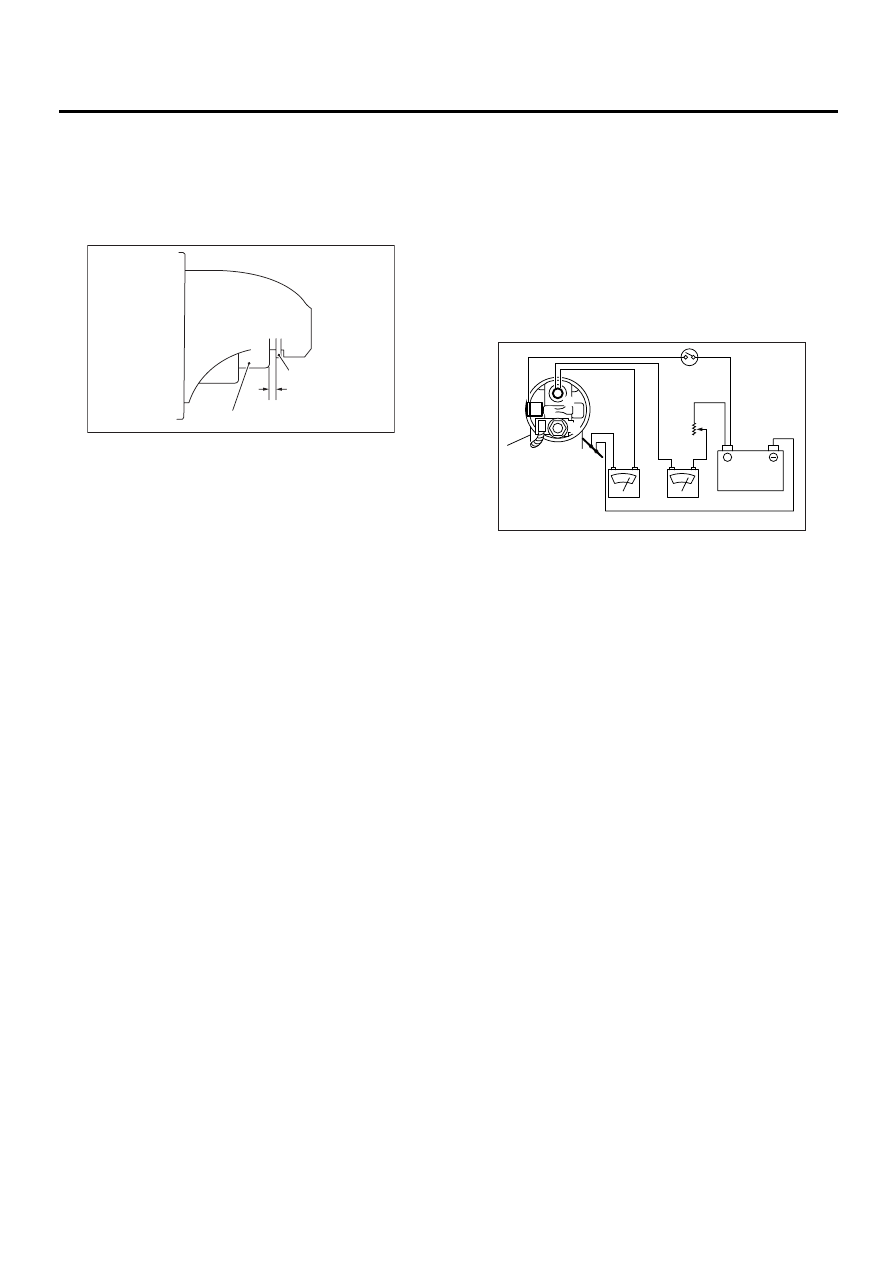Subaru Legacy III (2000-2003 year). Manual - part 456

SC(H4DOSTC)-12
STARTING/CHARGING SYSTEMS
STARTER
7. PINION GAP
1) Measure the pinion gap while the pinion is pulled
out as shown in the figure.
Pinion gap:
0.5 — 2.0 mm (0.020 — 0.079 in)
If the motor is running with the pinion forced end-
wise on shaft, disconnect the connector from termi-
nal M of switch assembly, and then connect termi-
nal M to ground terminal (
−
) of battery with a lead
wire. Next, gently push the pinion back with your
fingertips, and then measure the pinion gap.
2) If the pinion gap is outside specified range, re-
move or add number of adjustment washers used
on the mounting surface of switch assembly until
correct pinion gap is obtained.
8. PERFORMANCE TEST
The starter should be submitted to performance
tests whenever it has been overhauled, to assure
its satisfactory performance when installed on the
engine.
Three performance tests, no-load test, load test,
and lock test, are presented here; however, if the
load test and lock test cannot be performed, carry
out at least the no-load test.
For these performance tests, use the circuit shown
in figure.
1) No-load test
With switch on, adjust the variable resistance to ob-
tain 11 V, take the ammeter reading, and then mea-
sure the starter speed. Compare these values with
the specifications.
No-load test (Standard):
Voltage / Current
MAX. 11 V / 90 A
Rotating speed
MT vehicles
2,800 rpm or more
AT vehicles
2,400 rpm or more
(A) Pinion
(B) Gap
(C) Stopper
SC-00027
( A )
( B )
( C )
(A) Variable resistance
(B) Magnetic switch
(C) Starter body
SC-00077
(A)
(B)
(C)
12V
+
A
V
B
S
M